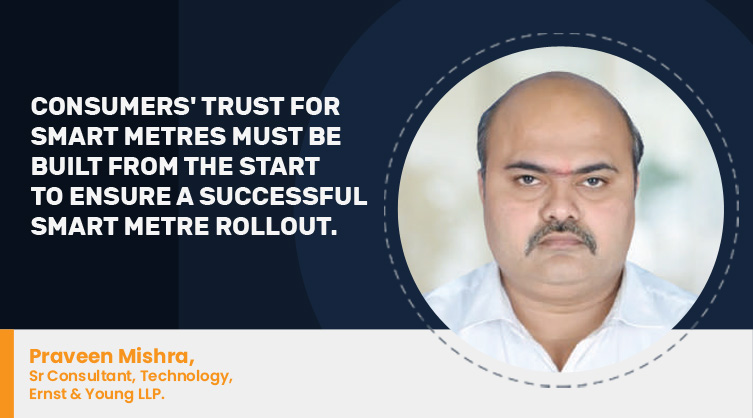Utilities will adopt Solar PV powered microgrids with smart meters in the coming days
By EPR Magazine Editorial September 29, 2022 5:40 pm
By EPR Magazine Editorial September 29, 2022 5:40 pm

India is moving at a moderately increasing rate of acceptance of the smart metering programme with approx. 50 Lakh Smart meters installed so far, the utilities who embarked on the smart metering journey have seen the benefits in terms of their financial and operational efficiency improvements and the various other benefits that the consumers receive. The other stakeholders of the solution, like meter manufacturers, cloud services, telecoms services, etc., have also responded well.
With the RDSS scheme and the Standard bidding document (SBD) issued by REC, AMI system integrators and implementation agencies are encouraged to participate. Utilities are also comfortable with the TOTEX model and Per Meter Per Month (PMPM) mode of payment. Therefore, as society is gradually recovering from the inertia of acceptance of smart metering, there will be faster commissioning and implementation of the smart metering system in the upcoming years.
Possible opportunities with RDSS Scheme
More focus on digitalisation of the power sector. Smart metering enables data from every endpoint of the utility’s distribution network, which can be fed to AI/ML data analytics tools for informative insights for decision-making.
One hundred per cent funding availability on Part B components of RDSS with solutions like NFMS and Unified billing system enables DISCOMs to participate in automation penetration in AI/ML solutions.
The restructured funding model for Smart Metering Installation to reduce the financial burden on DISCOMS by TOTEX model. The funding available in the CAPEX component during the implementation period and the OPEX component may be paid Per Meter Per Month (PMPM) throughout the O&M phase.
Challenges of the RDSS SchemeAccelerating smart metering adoption
Last-mile connectivity for electricity in remote locations is still a challenge in India. Mini grid and Microgrid may be cost-effective and game-changing solutions. A microgrid powered by solar panels with smart prepaid meters for each household. Suitable consumer awareness programs for prepayment benefits will help remote locations adopt smart meters. Smart meters will also allow utilities to recover revenue from these locations and control pilferage and tampering.
With smart grids, the balance of the flow of energy can manage efficiently throughout the grid. This is because, with the help of the smart meters, it will be easier to identify voltage drop, frequency change, power demand surges and outages in real-time, demand-supply, and adaptability will lead the system to stability. Utilities may allow regulatory provisions for consumers to pay for the system strengthening of the grids
We use cookies to personalize your experience. By continuing to visit this website you agree to our Terms & Conditions, Privacy Policy and Cookie Policy.